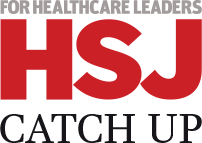The NHS workforce is now more diverse than at any time in its history, and yet at the most senior levels, the leadership of organisations do not reflect the workforce
Sponsored by
Our staff should look at their leaders and see themselves represented, and our patients deserve the same. We know that when we support Black, Asian and other ethnic minority staff to rise through our organisations and to take leadership positions, everybody benefits.
This list represents both a cause for celebration and a reminder that we are far from “mission accomplished” on the race equity agenda. It’s welcome, however, that the new Labour government has made an explicit commitment to race equity in a way no government has for many years.
It is critical therefore that the forthcoming NHS 10-Year Plan focuses on approaches to tackle the causes of the racial inequality that exists for staff as well as for patients. We cannot afford the cost of staff and patient care that results from the way we appoint, treat and develop a large section of the NHS workforce.
In my previous role working on the NHS Workforce Race Equality Standard, we set a national goal for all NHS organisations that was clear and ambitious: that NHS leadership should be as diverse as the rest of the workforce, and that BAME representation at senior management level should match that across the rest of the NHS workforce. We all know this ambition remains an ambition and that organisations need to do a lot more, by focusing on evidence-based approaches to improvement.
Alongside improving diversity of representation across all levels and investigating the true scale of the ethnicity pay gap challenge, the NHS also has the task of improving workplace culture. In general, we have seen worsening trends in bullying and harassment across the workforce and a widening gap in experience between Black and ethnic minority staff and their white colleagues. This is not good for our workforce nor for the patients they serve. These will be some of the areas of focus for the NHS Race and Health Observatory as we head into this phase of our work.
It’s a time of opportunity for those who are, and those who aspire to be, leaders – and tackling inequality must be at the heart of their leadership manifesto. And of course, tackling racism and discrimination cannot be the burden for those most impacted; it must be a shared endeavour and equity must be a vision for all.
My sincere thanks and gratitude to both the HSJ and our expert panel of judges for their support, input and insight.

The 50 most influential Black, Asian and minority ethnic people in health: Full list
- 1
- 2
- 3
 Currently reading
Currently readingSteady growth in power among diverse leadership during a time of opportunity
- 4
- 5
- 6

































2 Readers' comments